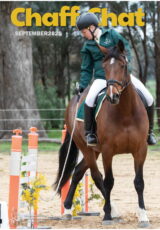Chaff Chat

Stay up to date with all the latest news from HRCAV
Social Media

Visit our official Facebook Page
© Copyright 2024 Horse Riding Clubs Association of Victoria. All rights reserved.
Website Design by SGD
Information on this website is posted as received. The HRCAV does not accept responsibility for the accuracy of the information contained in any documents, advertisments or articles. The appearance of any advertisment, information or article should not be assumed to imply that the HRCAV recommends the goods or services or endorses the information contained therein. Links to third party sites are provided as a service. These sites are not under the control of the HRCAV and their inclusion does not imply that the HRCAV endorses the products or services or information contained therein.